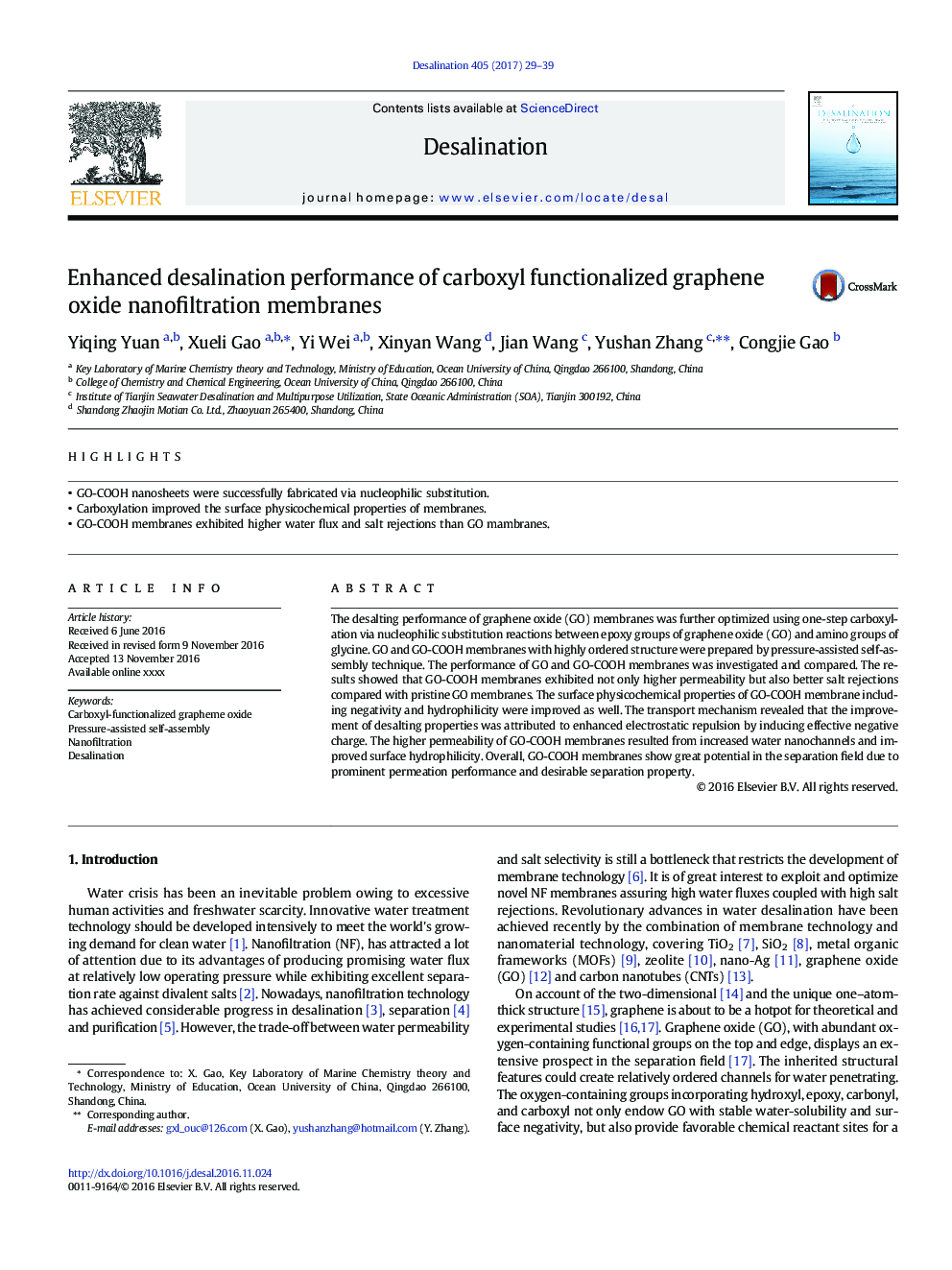| Article ID | Journal | Published Year | Pages | File Type |
|---|---|---|---|---|
| 4987904 | Desalination | 2017 | 11 Pages |
Abstract
The desalting performance of graphene oxide (GO) membranes was further optimized using one-step carboxylation via nucleophilic substitution reactions between epoxy groups of graphene oxide (GO) and amino groups of glycine. GO and GO-COOH membranes with highly ordered structure were prepared by pressure-assisted self-assembly technique. The performance of GO and GO-COOH membranes was investigated and compared. The results showed that GO-COOH membranes exhibited not only higher permeability but also better salt rejections compared with pristine GO membranes. The surface physicochemical properties of GO-COOH membrane including negativity and hydrophilicity were improved as well. The transport mechanism revealed that the improvement of desalting properties was attributed to enhanced electrostatic repulsion by inducing effective negative charge. The higher permeability of GO-COOH membranes resulted from increased water nanochannels and improved surface hydrophilicity. Overall, GO-COOH membranes show great potential in the separation field due to prominent permeation performance and desirable separation property.
Keywords
Related Topics
Physical Sciences and Engineering
Chemical Engineering
Filtration and Separation
Authors
Yiqing Yuan, Xueli Gao, Yi Wei, Xinyan Wang, Jian Wang, Yushan Zhang, Congjie Gao,
